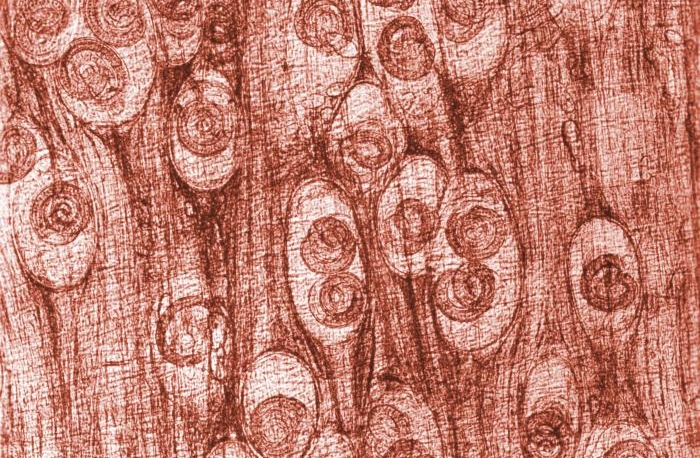Leper (noun): a person who is ignored or despised.
The leper is historically depicted as an outcast, a criminal, and most certainly someone to be avoided. He is reviled as the physical incarnation of God’s wrath and a sinner deserving of punishment. In truth, this victimized individual is merely one of the unfortunate few susceptible to the Bacillus leprae, the bacterial agent that causes the dreaded disease leprosy.
Because the term “leper” expanded so far past its medical definition, the disease has been renamed. Leprosy is now more appropriately called Hansen’s Disease (HD), after the Norwegian scientist, Gerhard Armauer Hansen, who identified the causative bacteria in 1873.
Victims of leprosy are the longest-standing sufferers of social rejection; the first recorded cases appeared between 600 and 200 B.C. They are also the exceptional targets of crimes against humanity in the modern age.
“The Unclean”
From biblical times to the Middle Ages, lepers were outcasts, regarded as already dead and completely shunned from the rest of society. Strict regulations governing their movements forced many to live as beggars and vagrants. They scrounged the streets, announcing their approach with the ring of a bell and cries of “Unclean!” while always hiding their deformities beneath a black cowl.
The construction of leprosy hospitals, also known as “leprosariums” or “lazar houses,” increased in Europe during the Middle Ages, reaching its apex in the late 13th century. Britain alone boasted at least 202 lazar houses during that time period. Lepers as well as anyone with a visible skin condition were banished to these homes to die in isolation.
The Exiles of Molokai
For over a century the infamous Kalaupapa colony on the Hawaiian island of Molokai functioned as a prison for more than 8,000 alleged lepers. Spurred by an increase in “diagnosed” cases, the Hawaiian king (influenced by Western representatives) passed a law criminalizing leprosy in 1865. All those thought to have the disease could be arrested and confined in isolation.
Suspected patients were awarded a perfunctory medical examination. At this time, a clinical method did not yet exist. Therefore, presenting any symptoms of leprosy, which mimic a variety of conditions such as tuberculosis or even a bad sunburn, was sufficient to be exiled for life.
The first group of exiles: nine men, three women, and one stowaway child, arrived on the island in 1866. As a result of leprosy diagnosis, these individuals were considered civilly dead. Spouses were granted divorce, wills were executed, and the Board of Health seized property and savings to cover the cost of involuntary deportation.
Ten of them died within the first two years.
The first decade of life on the island was indescribable. The Board of Health provided no physicians, medical facilities, or treatment. New arrivals of young women and children were snatched and auctioned off as sex slaves, and death due to starvation, suicide, or murder was commonplace. As a result, the overall death rate in the first five years of exile was 46 percent.
Over time, conditions improved, but the exiles of Molokai continued to suffer gross human rights abuses. These included forced sterilization of the “unfit” and confiscation of children born to “leprous” parents. Some doctors assigned to the island conducted unethical medical experiments, using outcasts as test subjects. The continued confinement and persecution of innocent people over the course of 103 years now seems inconceivable.
The 1865 law criminalizing leprosy was finally rescinded in 1969, more than two decades after World War II’s Nuremberg trials and the establishment of the Nuremberg Code (a guide of research ethics for conducting human experimentation).
Hansen’s Disease
Contrary to previous beliefs, HD is not highly contagious and is completely curable. In fact, 95 percent of the population has a natural immunity to the disease. Of the unfortunate 5 percent who are susceptible to HD, two-thirds will become infected with the non-communicable form, leaving a very small percentage of the population that actually contracts the infectious form of the disease. Both forms can be treated with multi-drug therapy.
To this day, the exact mechanism of transmission of HD remains unknown. However, it is likely that the bacillus is spread by the respiratory route. It affects people of all ages, from as young as three weeks to older than 70, however younger children tend to be more susceptible.
The infectious lepromatous form is characterized by skin lesions, which increase in size and number as the disease progresses. This often occurs in the extremities, such as the fingers, toes, and ears. The severity of disfigurement is case specific; some will merely suffer mild joint pain while others will experience increasing numbness, hair loss, swollen tongue and lips, or eroded noses. The loss of sensitivity in the extremities leads to increased accidental physical trauma, although the popular image of body parts falling off is yet another propagated leprosy myth.
The tuberculoid form is not contagious and presents less severe symptoms. Patients may still suffer from skin disfigurement and loss of pain sensation. Often, this form spontaneously heals, although with some residual nerve damage.
Hansen’s Disease Today
Nowadays, HD has basically fallen off the radar. Since the treatment discovery in 1946, 107 out of 122 previously endemic countries have eliminated the disease. Nevertheless, approximately 100 cases of HD are diagnosed annually in the United States alone, and it is estimated that there are currently 6,500 individuals in the United States who have or have had the disease. The vast majority of cases however continue to occur in the developing world. India, with 64 percent of worldwide cases, carries the greatest burden.
Leprosy is a fascinating case study for those interested in the balance of individual human rights and public health. Its history remains relevant today, as in recent history, government officials discussed re-instituting Kalaupapa to quarantine AIDS patients.
Misunderstood diseases such as HD and AIDS often breed fear and irrational action. Albert Camus writes in his novel The Plague, “The evil that is in the world always comes of ignorance, and good intentions may do as much harm as malevolence, if they lack understanding.” The isolation of HD and proposed-quarantine of AIDS patients was meant to be protective, not harmful. Nevertheless, the disregard of basic human rights and consequential suffering overshadows any good this decision was intended to achieve.

